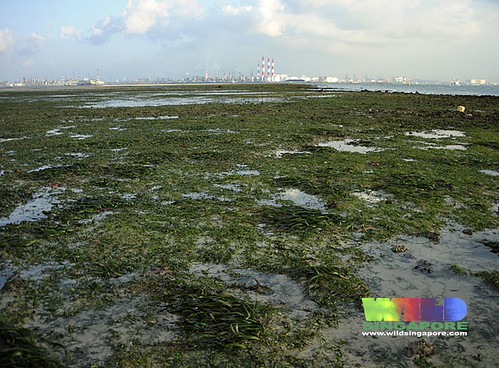
Lush seagrass meadows of Cyrene Reef;
In my earlier post on World Oceans Day, I mentioned seagrass meadows as one of several marine habitats that can still be found in coastal areas of Singapore. But what are seagrasses? Why are they important? And what can we do to protect them?
What are seagrasses?
First of all, let's set things straight: seagrasses are NOT the same as seaweeds. Seagrasses are the only flowering plants adapted to grow underwater in marine environments.
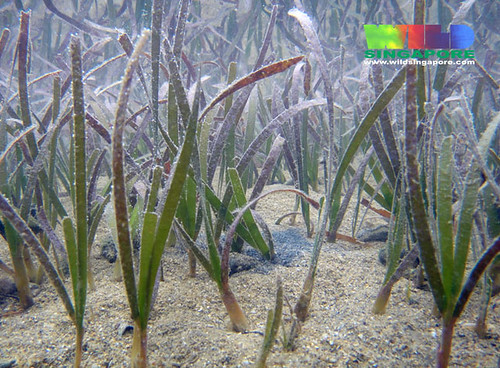
Smooth ribbon seagrass (Cymodocea rotundata);
(Tanah Merah)
Structurally, they have all the hallmarks of vascular plants (the so-called 'higher' plants): a proper stem, roots, leaves, and a network of veins and tubes to transport water and nutrients throughout the entire plant.

Fern seagrass (Halophila spinulosa);
(Changi)
Although some seaweeds might bear a superficial resemblance to seagrasses, they are not closely related at all. Seaweeds are classified as algae, and lack the distinguishing features possessed by vascular plants.
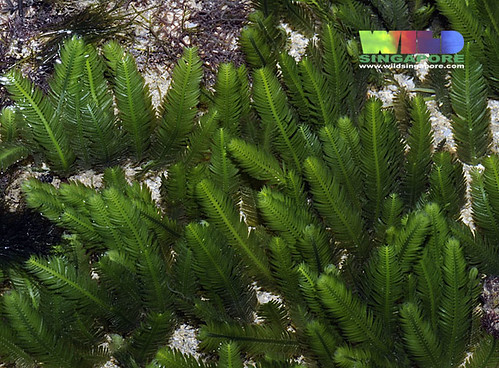
Don't let appearances deceive you; this is not a seagrass, but a feathery green seaweed (Caulerpa taxifolia);
(Sentosa)

It doesn't help when both seagrasses and seaweeds are often found growing together in the same area;
(Chek Jawa)
Like many other plants, seagrasses undergo vegetative reproduction, with new individuals sprouting from underground stems called rhizomes. However, given that they are classified as flowering plants, it's not surprising that seagrasses do produce flowers and fruits from time to time, although these are not brightly coloured. Both pollination and seed dispersal are carried out by water, although small crustaceans and worms may transport pollen between flowers, while seeds may be consumed by fishes, terrapins, and seabirds, and still remain viable after passing through the guts of these animals.

Flowers of sickle seagrass (Thalassia hemprichii);
(Labrador)
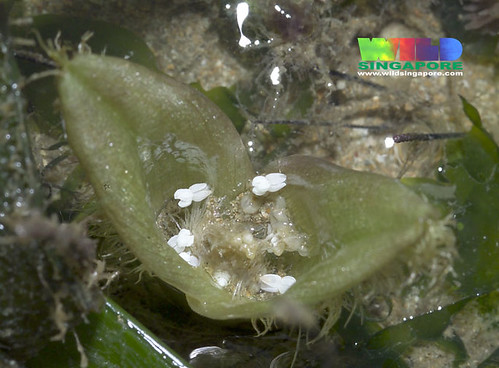
In some species, individual plants will develop either male or female flowers. This particular tape seagrass (Enhalus acoroides) has produced male flowers, which look like tiny pieces of polystyrene foam;
(Pulau Sekudu)
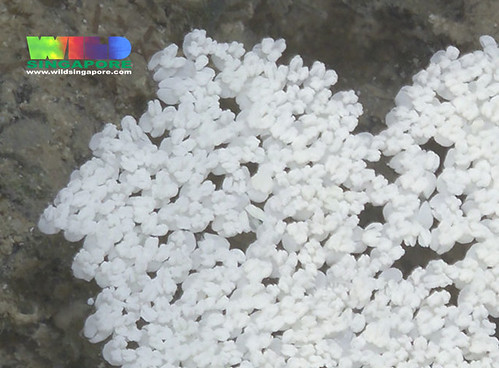
These male flowers detach and float about, often forming 'rafts';
(Sentosa)
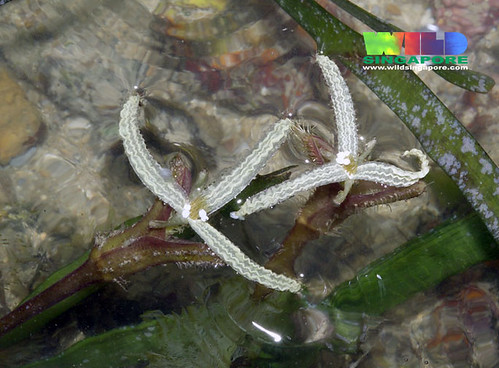
And these are the female flowers of tape seagrass. The male flowers float around until some eventually bump into the female flowers, allowing pollination to occur;
(Sentosa)
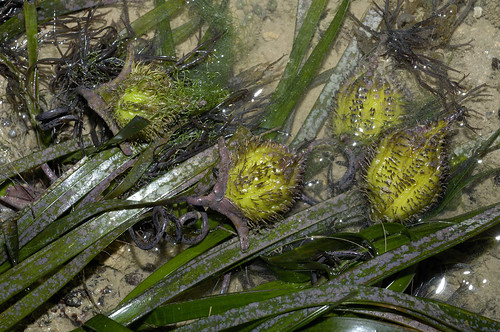
These are the fruits of tape seagrass. When ripe, the fruits split open, releasing the seeds, which float for some time before sinking to the bottom and germinating;
(Labrador)
Where can you find seagrasses in Singapore?
Like all other green plants, seagrasses undergo photosynthesis, and so are usually found in shallow waters where sunlight can penetrate, mostly on sandy or muddy substrates.
Despite our often murky waters, there are many areas in Singapore where you can find luxuriant seagrass meadows when the tide is low enough.
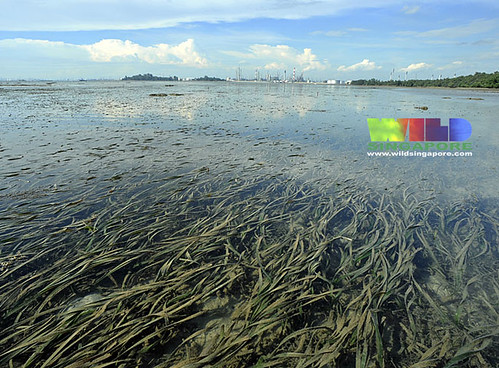
The western edge of Pulau Semakau has the largest continuous patch of seagrass in Singapore, covering 13.5 hectares. Yes, this is the very same island where all our incinerated trash is buried;
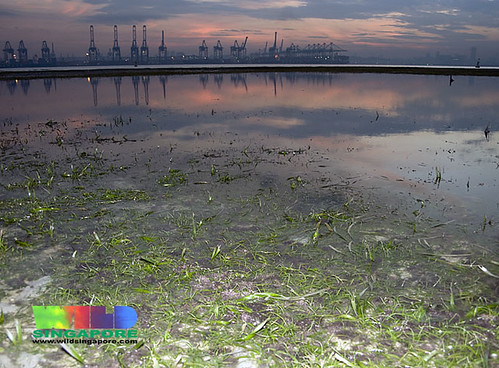
Cyrene Reef, which is right smack in the middle of a triangle formed by Jurong Island, Pulau Bukom, and the container terminals at Pasir Panjang, actually has the largest total expanse of seagrass (14 hectares), but this takes the form of a number of large, disconnected patches;

At 6.5 hectares, Chek Jawa has the third largest seagrass meadow, but once again, its distribution is patchy;
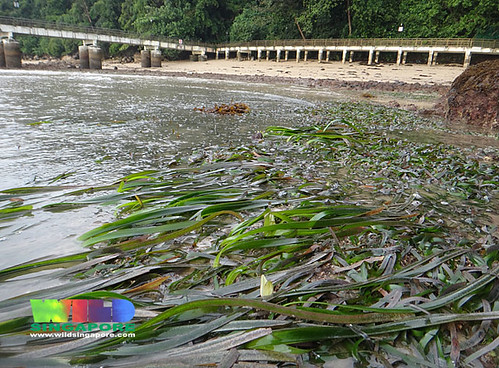
Labrador Park possesses one of the largest seagrass meadows found on mainland Singapore;
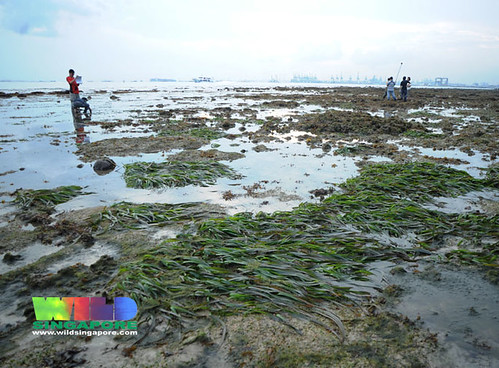
Seagrass meadows can also be found on some of the less disturbed shores of Sentosa;
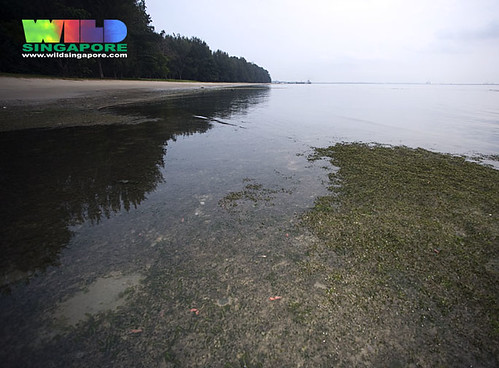
Changi is heavily impacted by human activities on the shore, but there are extensive patches of seagrass there;

Given enough time and minimal disturbance, even reclaimed areas can be colonised by seagrasses. This patch of seagrass is growing along an artificial stretch of coastline along Tanah Merah;
How many types of seagrass are there in Singapore?
Globally, there are sixty or so species of seagrass. In Singapore, at least ten species of seagrass have been recorded in recent surveys, and not all of them look like marine versions of the grasses we see growing on land. In fact, seagrasses and true grasses are not very closely related. Here's a showcase of our seagrasses:
Spoon seagrass (Halophila ovalis)

Spoon seagrass (Halophila ovalis) is the most common seagrass, and can tolerate a wide variety of conditions. As a result, it is often found growing in areas where other seagrass species are absent. Another similar-looking species (Halophila minor) has been recorded from Singapore in the past, although there is controversy as to whether this is actually a distinct species or a small-leaved variant of spoon seagrass;
(Chek Jawa)
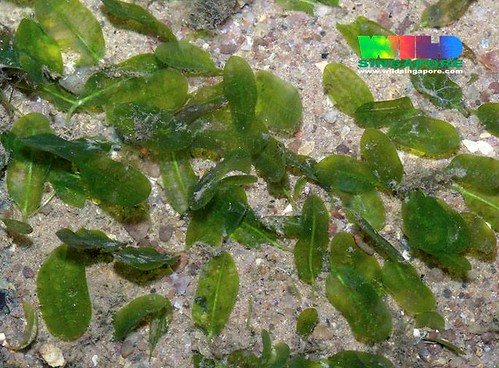
(Labrador)
Fern seagrass(Halophila spinulosa)
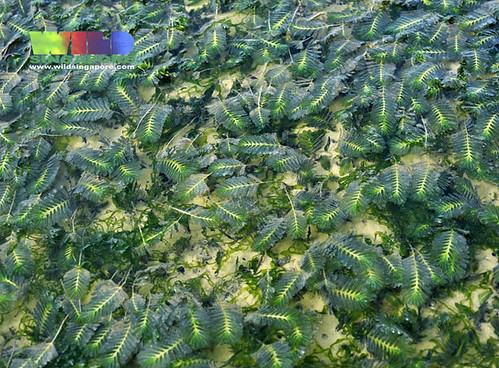
Fern seagrass (Halophila spinulosa) can form extensive patches, but its distribution here is restricted to our northern shores like Chek Jawa and Changi. This species usually grows in deeper waters elsewhere in its range, but here in Singapore, it can be found in shallow intertidal areas;
(Chek Jawa)

(Changi)
Beccari's seagrass (Halophila beccarii)
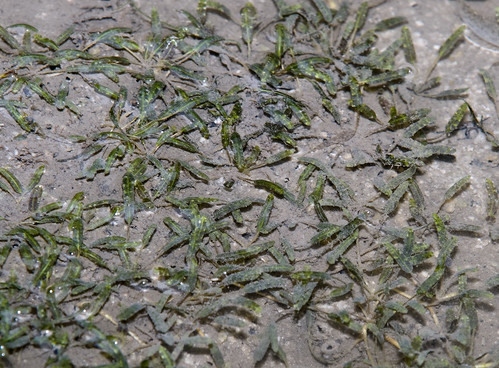
Beccari's seagrass (Halophila beccarii) is another species restricted to our northern shores. This species appears to have a preference for mangrove habitats, and can be found forming a lush carpet amongst the mangrove trees in Mandai, Kranji, and Sungei Buloh;
(Mandai)

(Kranji)
Hairy spoon seagrass (Halophila decipiens)

Hairy spoon seagrass (Halophila decipiens) was a relatively recent addition to our list of seagrass species. It was first recorded off Pulau Semakau in 2008, but has since been found elsewhere. The only pan-tropical seagrass species, it can be found not just in the Indo-Pacific, but also in the Caribbean;
(Changi)
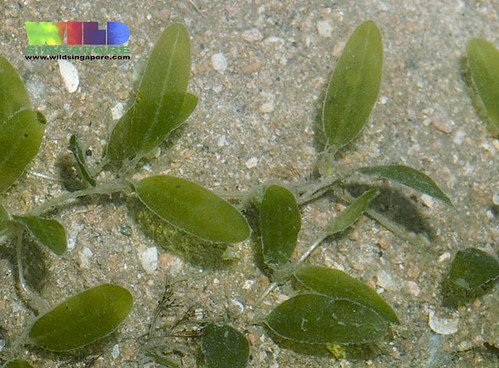
(Pulau Sekudu)
Tape seagrass (Enhalus acoroides)
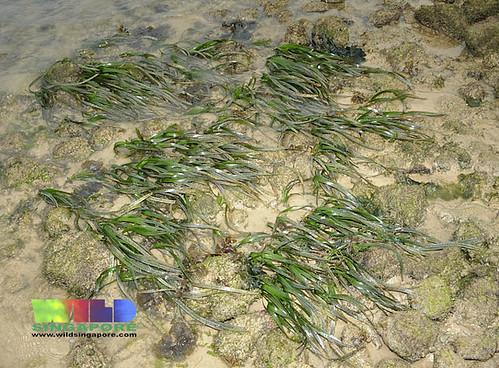
Tape seagrass (Enhalus acoroides) is the second most widespread species here in Singapore, and can be found in isolated patches amongst other seagrass species, or dominate entire meadows. Its leaves can reach up to 1.5 metres in length;
(St. John's Island)
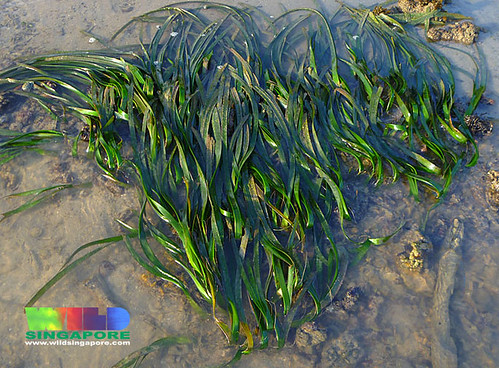
(Sentosa)
Sickle seagrass (Thalassia hemprichii)
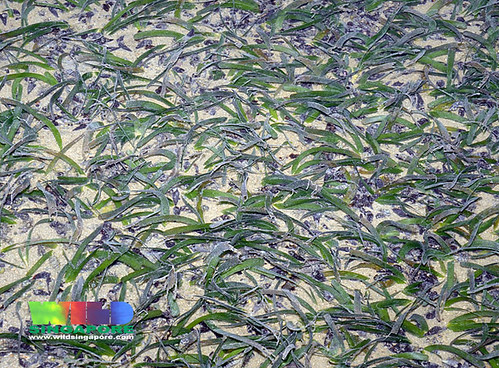
Sickle seagrass (Thalassia hemprichii) is found mostly on our southern offshore islands and reefs, with a large patch on Labrador and a smaller one on Chek Jawa. It can be recognised by its curved, sickle-shaped leaves;
(Tanah Merah)
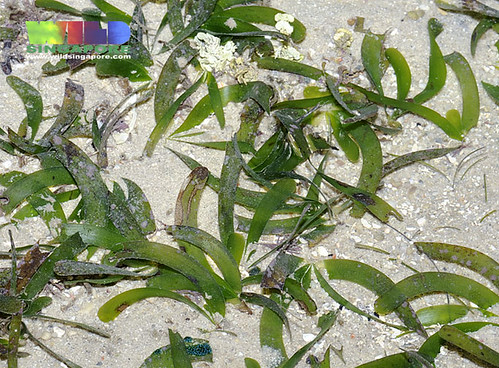
(Cyrene Reef)
Smooth ribbon seagrass (Cymodocea rotundata)
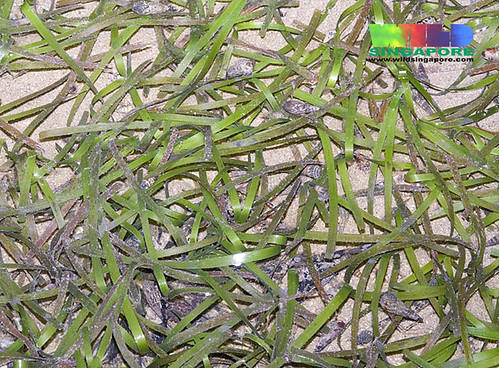
The smooth ribbon seagrass (Cymodocea rotundata) is a fast-growing species with a preference for clear water that has been found on Cyrene Reef, Chek Jawa, and Tanah Merah;
(Tanah Merah)
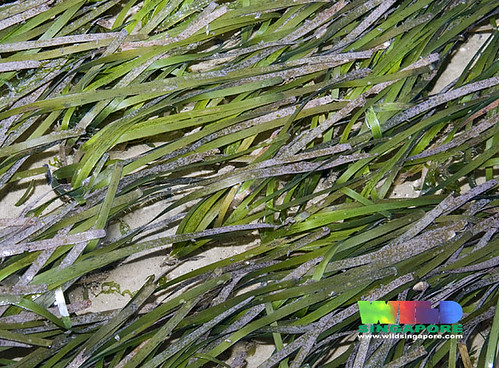
(Chek Jawa)
Serrated ribbon seagrass (Cymodocea serrulata)

The similar-looking serrated ribbon seagrass (Cymodocea serrulata) has very little overlap in distribution with its relative. Both species are found on Cyrene Reef, but the serrated ribbon seagrass is abundant on Pulau Semakau and a few other offshore southern islands and reefs, where the smooth ribbon seagrass is absent. This species is usually dominant in muddier waters;
(Pulau Semakau)

(Cyrene Reef)
The two species can be distinguished by the presence or absence of serrations on the tips of the leaves.
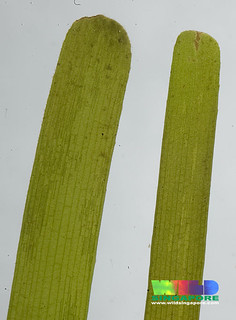

Left: Smooth ribbon seagrass;
Right: Serrated ribbon seagrass;
Needle seagrass (Halodule uninervis)
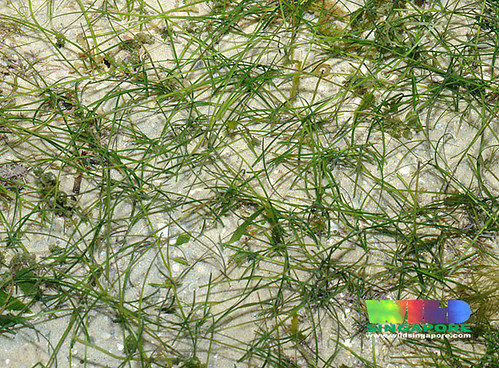
Needle seagrass (Halodule uninervis) is another widely distributed species, and grows well in areas with high disturbance. The leaves are typically narrow, although slightly broader leaves may be encountered, leading to confusion with other seagrass species. There is some controversy as to whether another form with a slightly different leaf tip is a distinct species (in which case it would be called Halodule pinifolia), or simply represent variation within a single species;
(Cyrene Reef)
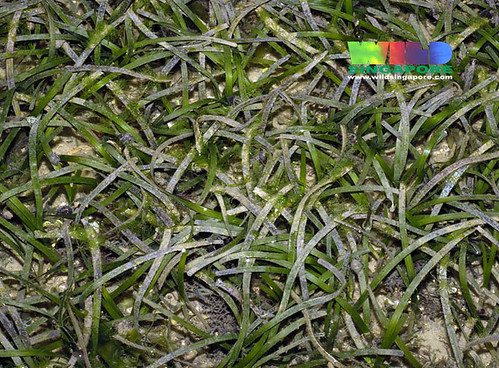
(Sentosa)
Noodle seagrass (Syringodium isoetifolium)
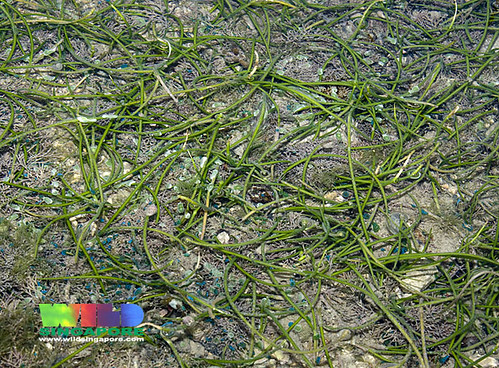
Unlike all other seagrass species, which have flat leaf blades, the long, thin leaves of noodle seagrass (Syringodium isoetifolium) are cylindrical. This species grows on our southern offshore islands and patch reefs;
(Cyrene Reef)
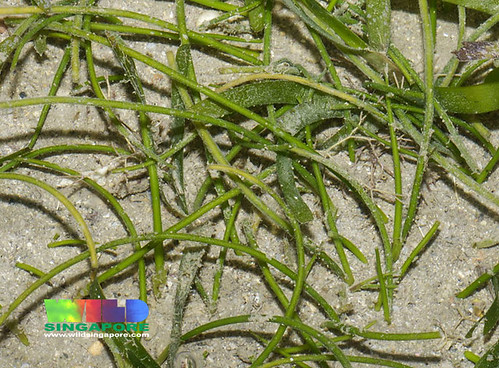
(Cyrene Reef)
Next up, why are seagrasses important? And why are they in trouble?
(All photos by Ria Tan)
(Cross-posted to SBA Plus. Do support me in the Singapore Blog Awards!)